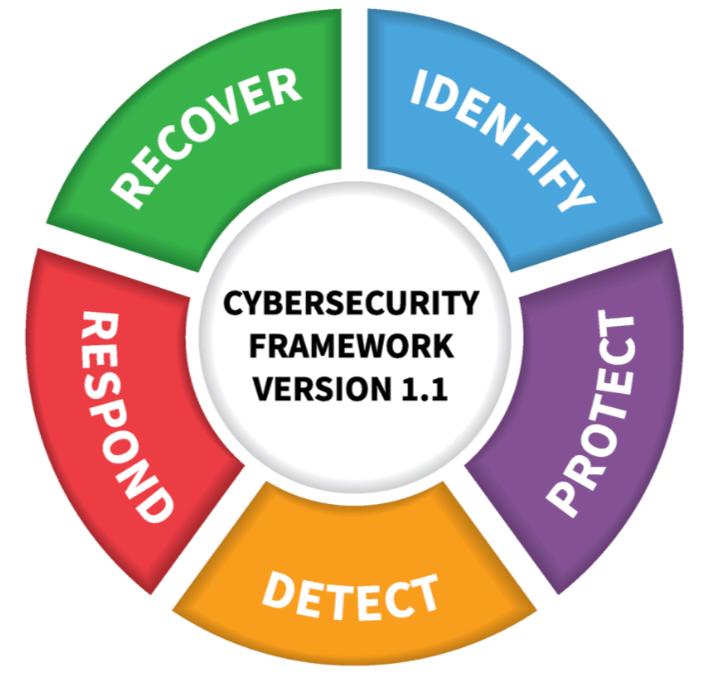Complying with NIST Password Guidelines Helps Organizations
Acknowledging that no security team can be entirely protected against breaches, organizations are turning to cyber liability insurance to cushion potential losses. Yet, securing affordable cyber insurance rates can be an uphill battle, especially for companies lacking a solid cybersecurity framework. The National Institute of Standards and Technology (NIST) Cybersecurity Framework gives organizations a tool for managing risk, with recent research showing that following NIST password guidelines helps organizations secure better rates on their cyber liability insurance.
The NIST Cybersecurity Framework (CSF) provides a comprehensive blueprint for organizations to manage and reduce cybersecurity risk. It has five core functions: Identify, Protect, Detect, Respond, and Recover. These functions offer a strategic way for organizations to prioritize how they approach security.

Security teams can create a standardized approach to cybersecurity with the NIST CSF, which can simplify finding vulnerabilities, protect assets, respond to incidents, and remediate after an attack.
Insurance underwriters assess premiums through the lens of risk and probabilities. Organizations that show a lower likelihood of cyber incidents are more likely to secure better rates. Compliance with the NIST CSF is a signal that an organization is proactive in managing risk.
The CSF elevates risk management to a consistent standard among compliant organizations. Insurers, using this cohesive blueprint, can calculate premiums with greater precision. Why? Because they now have a transparent and methodical approach to assessing risk.
Using NIST as a guide for an organization’s defenses can help demonstrate to insurers that they have a strategy behind their risk management. Insurers take notice and may gravitate toward companies that have implemented these protective measures, giving them better insurance rates and terms. They’re more eager to underwrite policies for those who have strong and documented defenses.
Consider the recent Healthcare Cybersecurity Benchmarking Study, which shows a substantial financial upside to adopting the NIST Cybersecurity Framework. Those that use the framework experience a significant reduction in the rise of premiums. NIST CSF adopters see an annual premium rise of only 6%, compared to 18% for those not following these guidelines.
Insurers see NIST CSF compliance as a mark of greater readiness, translating to less perceived risk for the compliant organization.
Step 1: Assess Current Cybersecurity Posture Against NIST CSF Standards
Start by taking a look at your current cybersecurity setup. Then, line it up against the NIST CSF to spot gaps and pinpoint areas that need tightening within the five core functions.
Step 2: Develop a Strategic NIST CSF Compliance Roadmap
Once you’ve identified the weak spots, sketch out a detailed plan to map out exact steps, assign responsibilities, and set deadlines for fixing the gaps.
Step 3: Implement the Plan and Enhance Cybersecurity Defenses
Bring the roadmap to life by implementing the needed policies, procedures, and technologies. This might mean training your team, updating software, or bringing in new security tools.
Step 4: Continuous Monitoring and Adapting to Evolving Cyber Threats
Cybersecurity must adapt to new threats as they evolve. Stay vigilant by continuously watching your systems, refreshing your practices, and staying ahead of new threats and NIST updates.
Step 5: Engage Insurers Early with Proof of NIST CSF Compliance
Don’t wait. Start talks with insurers early on about your NIST CSF compliance. Show them documentation and proof of your adherence to negotiate betterrates.
Achieving and maintaining NIST CSF compliance can be resource-intensive, especially when it comes to the specific NIST CSF sections on password guidelines.
Enzoic for Active Directory simplifies this process by automating adherence to critical aspects of the NIST CSF, such as the NIST password guidelines outlined in NIST 800-63b. This solution sets up fast and runs automatically in the background to help organizations protect passwords and potentially qualify for lower Cyber Liability Insurance rates. Read on to learn how.
Continuous Credential Monitoring to Meet NIST Password Guidelines
Enzoic’s radar is always on, scanning user credentials with real-time vigilance against password breaches. This aligns with the “Protect” pillar of NIST CSF.
Enforcing Strong Passwords: Key to NIST 800-63b Compliance
Enzoic for Active Directory enforces strong, policy-abiding passwords, a direct nod to NIST 800-63b.
Automated Responses to Cyber Threats with Enzoic
The moment compromised credentials are detected, Enzoic’s automatic remediation kicks in, allowing organizations to react instantly. The “Respond” and “Recover” functionalities are automatically covered.

Enzoic for Active Directory allows organizations to achieve one-click NIST 800-63b password compliance.
Compliance with the NIST Cybersecurity Framework (NIST CSF) is a strategic move that can significantly impact your organization’s financial health. By actively managing cybersecurity risks and demonstrating compliance, you enhance your defense against breaches and position your organization favorably with cyber insurers.
Tools like Enzoic for Active Directory make the journey toward NIST compliance more manageable with an automated solution that lets organizations align with key areas of the framework. Leveraging automated tools can make compliance easier and automated, and pay for themselves not only with the man-hours saved but also with better security and insurance rates.
AUTHOR
 Josh Parsons
Josh Parsons
Josh is the Product Manager at Enzoic, where he leads the development and execution of strategies to bring innovative threat intelligence solutions to market. Outside of work, he can be found at the nearest bookstore or exploring the city’s local coffee scene.
Start for free. Enzoic provides a clean user interface to screen for compromised passwords.